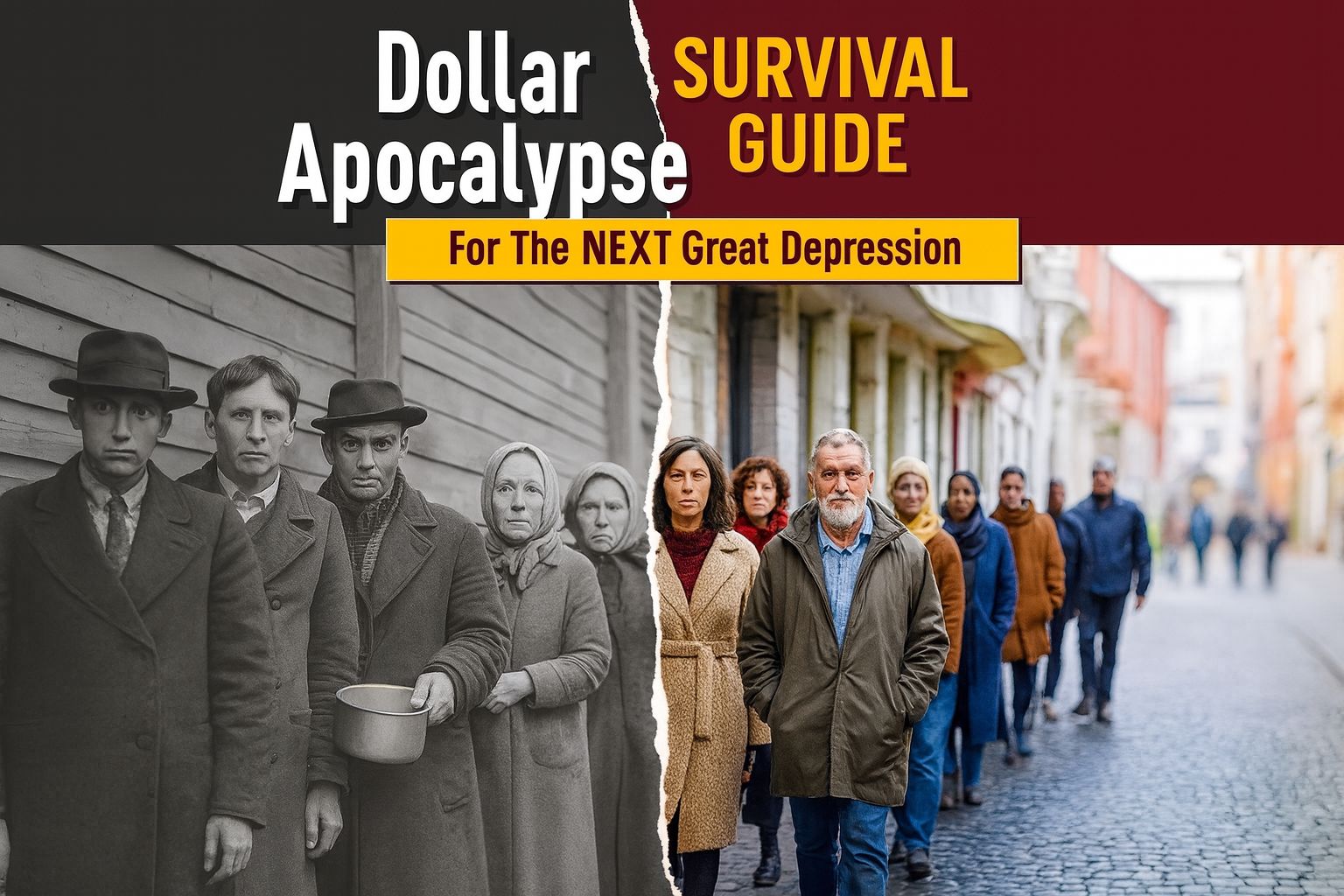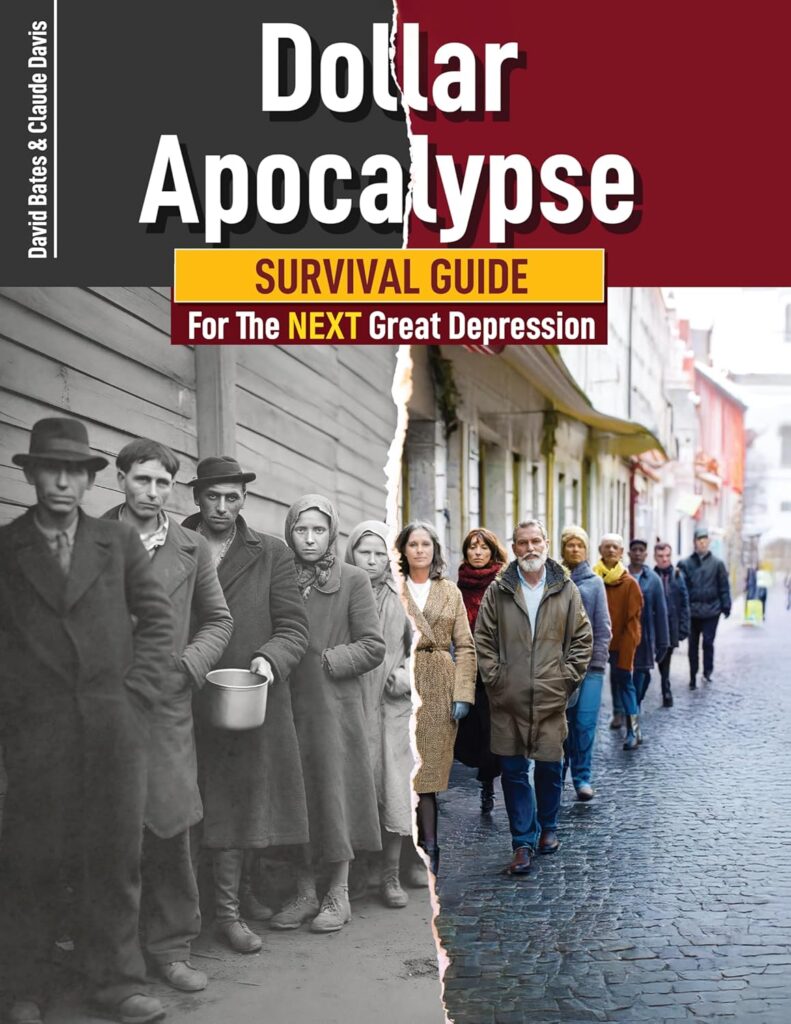
If you’re looking for a forward-thinking, practical guide to navigating economic uncertainty, Dollar Apocalypse delivers. This book is that rare combination: part analysis, part roadmap, and part rallying cry for those who want to prepare intelligently rather than react in panic. I came away feeling more confident about what to watch, what to protect, and what actions make sense — not through alarmism, but through reasoned, stepwise advice.
The writing style is approachable even when it dives into complex territory. The author takes what could easily be overwhelming topics — like monetary collapse or systemic fragility — and breaks them down into language that the average reader can follow. It feels like you’re being guided by a knowledgeable friend who knows the subject well, rather than lectured by an economist in an ivory tower. That accessibility makes the lessons stick.
What Stands Out
1. Timely, Relevant Topic
Global finance and macroeconomic forces are increasingly unstable: inflation, currency devaluation, recessions, monetary policy shifts. The author tackles these head-on, framing the “apocalypse” not in sensational terms but as plausible risks that deserve thoughtful planning. For anyone paying attention to broader economic trends, this book is immediately relevant.
What makes the timing even more powerful is how the book connects today’s headlines with historical patterns. By drawing parallels with past depressions, currency crashes, and financial panics, the author shows that what seems “unthinkable” has actually happened before — and could happen again. That context gives credibility to the advice instead of making it feel speculative.
The book also shines in showing how fragile our systems really are, from global supply chains to central banking policies. It reminds you that instability isn’t just something far away in the news; it can show up quickly in your grocery bill, your retirement account, or your local job market. That perspective makes the urgency to prepare feel grounded and justified.
2. Balanced Tone — Not Doomsday Hype
One of the strengths is how the author balances urgency with reason. It doesn’t read like a fear-porn manifesto. Instead, it acknowledges real risks while emphasizing what you can control: your mindset, your preparations, your priorities. The style motivates without paralyzing.
That’s important, because so many books in this category lean too hard on shock value, leaving readers anxious but unsure what to do. Here, you get a clear-eyed look at the risks without the sense that the sky is falling tomorrow. It’s about smart, steady steps, not panic buying or extreme measures.
The author also injects hope throughout the book. By focusing on resilience and adaptability, the message becomes empowering rather than frightening. Instead of “the world is ending,” the theme is “you can be ready, and you can come out stronger.” That shift in framing makes all the difference in how you feel after reading.
3. Actionable Strategies & Hands-On Steps
This isn’t just theory. The book offers concrete advice on:
- Protecting savings against devaluation
- Diversifying assets and hedges
- Building resilient “stacked” portfolios
Physical preparedness: supplies, tools, resilience - Community & network thinking — not just solo survival
What stands out is that the advice is detailed enough to implement, but not so prescriptive that it feels rigid. For example, instead of saying “buy this exact investment,” the author explains categories and principles so you can adapt them to your situation. That flexibility makes the guidance more practical across different income levels and lifestyles.
Even the sections on physical preparedness go beyond generic lists. They explain why certain items matter, how to prioritize when resources are limited, and how to think about redundancy. The addition of community and networking advice is especially refreshing, since many survival guides focus only on individual stockpiling. The reminder that relationships and cooperation are forms of wealth is a lesson worth underlining.
4. Big Picture + Granular Insight
It moves fluidly between macroeconomic concepts (monetary policy, fiscal pressures, global trade) and granular tactics (what to buy, how to set up redundancies, how to think about barter or alternate systems). Readers won’t feel lost in abstractions, nor stuck with only the “small stuff.”
The big-picture sections help you understand why you’re preparing, giving you the confidence that your actions are rooted in real forces shaping the world. At the same time, the granular tactics provide the “how.” This dual approach means the book serves both as an educational resource and as a practical guidebook you’ll want to keep nearby.
Another strong point is how the book avoids overcomplication. While it touches on global economics, it never strays so deep into theory that the average reader would get lost. Instead, it constantly ties ideas back to everyday reality: your wallet, your pantry, your neighborhood. That balance makes it resonate with a broad audience.
5. Encourages a Prepared Mindset
Beyond what to have, the book emphasizes how to think — resilience, adaptation, alertness, flexibility. In uncertain times, that mindset matters just as much as physical stocks or assets.
The sections on mindset may actually be the most valuable part of the book. Supplies can run out, markets can shift, and governments can change rules overnight — but your mental approach determines how you respond. By training yourself to think ahead, stay calm, and pivot quickly, you gain an edge that no checklist alone can provide.
The author also emphasizes that mindset is contagious. By modeling preparedness and calmness, you influence your family, friends, and community to do the same. In a crisis, that ripple effect can multiply resilience far beyond your own household. That makes this less about individual survival and more about collective strength, which is a rare but welcome perspective.
Who This Book Is For
- Preppers & survivalists, who already expect instability and want to broaden their financial/economic perspective.
- Investors & savers, who want to understand risks beyond the usual market forecasts.
- Anyone feeling uneasy about the future, wanting a roadmap rather than fearmongering.
- People who prefer “what to do” guides over just predictions.
The book is especially helpful for people who straddle both worlds — those who care about financial resilience and practical survival. It bridges the gap between Wall Street concerns and Main Street realities, which makes it accessible to a very wide range of readers.
It also has a place for beginners who may not identify as “preppers” but simply want to be more responsible and proactive about their future. The friendly tone makes it a good entry point, while the depth ensures even seasoned readers will learn something new.
Minor Caveats (Just to Be Fair)
Because the book tackles large, uncertain themes:
- Some predictions may or may not come true exactly as laid out — that’s inherent in forecasting.
- Not every recommendation will apply equally to every reader’s locale or economic position (e.g. different countries, regulations, access).
- A few sections might feel redundant to readers already well-read on finance or prepping.
Still, the strengths outweigh these limitations. The book succeeds not because it perfectly forecasts the future, but because it arms you with tools and frameworks that are valuable regardless of how events unfold. Even if certain scenarios don’t play out, the preparedness habits you develop will serve you in countless other ways.
In fact, the redundancy could even be a strength for newcomers. Reinforcing certain principles — like diversifying assets or building community ties — ensures those critical lessons aren’t easily overlooked. For a survival guide, repetition of core truths can sometimes be just what’s needed.
Final Verdict
Dollar Apocalypse: A Survival Guide is one of those books that leaves you better prepared — mentally and materially — without feeling you’ve wasted your time. It doesn’t pretend to know exactly how the next crisis will play out, but it does offer tools, frameworks, and mindset shifts that are useful no matter which way the winds blow.
The book’s combination of urgency, balance, and practical advice makes it stand out in a crowded field. It’s not just about predicting problems but about equipping you to meet them with strength and clarity. That makes it not just a book you read, but a resource you return to when planning your next steps.
If you want to take action instead of just worry, this is a strong pick. Recommend it to friends who think about stability, value preservation, or just want to be smarter about uncertainty. It’s the kind of book that sparks conversation — and more importantly, sparks action.



